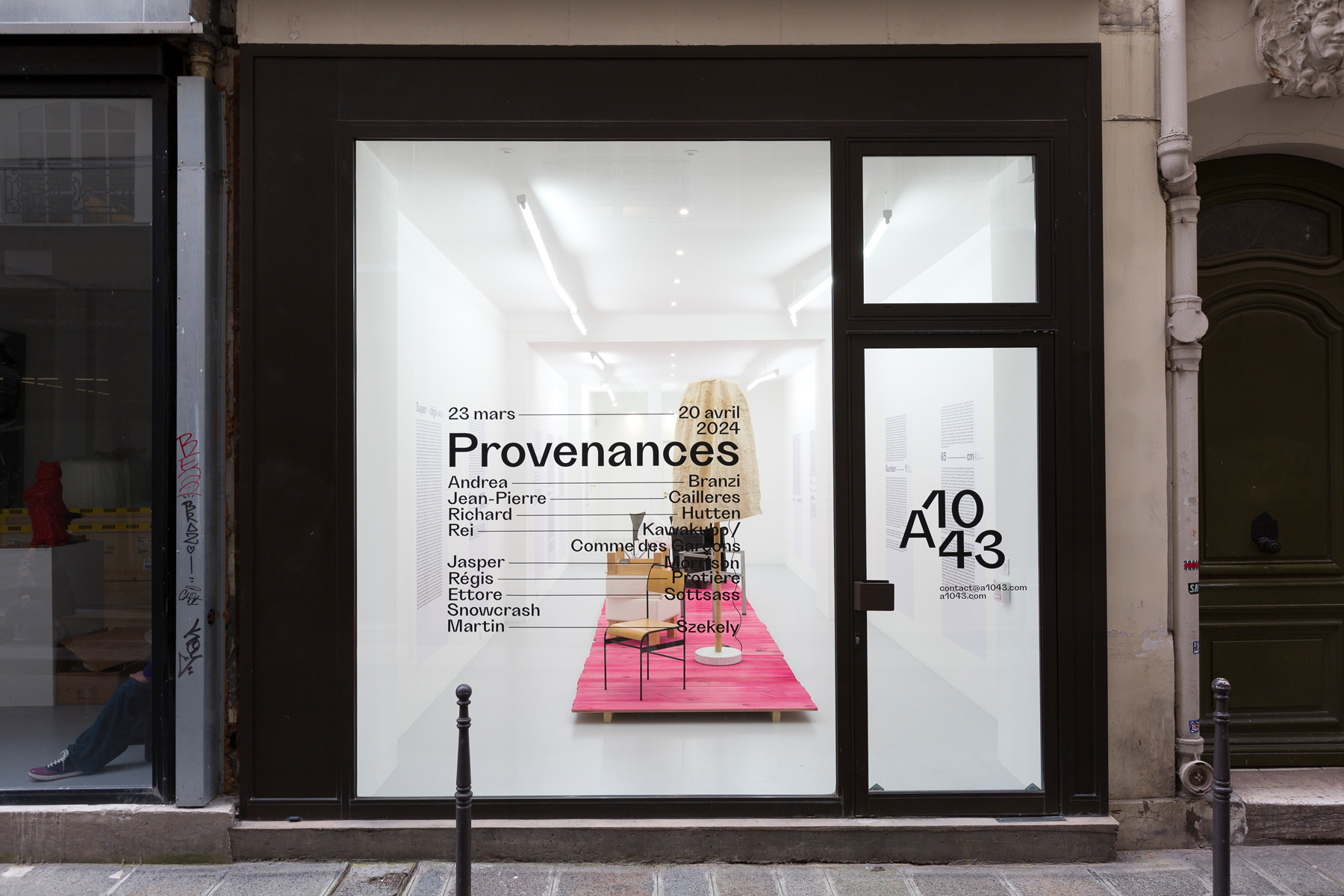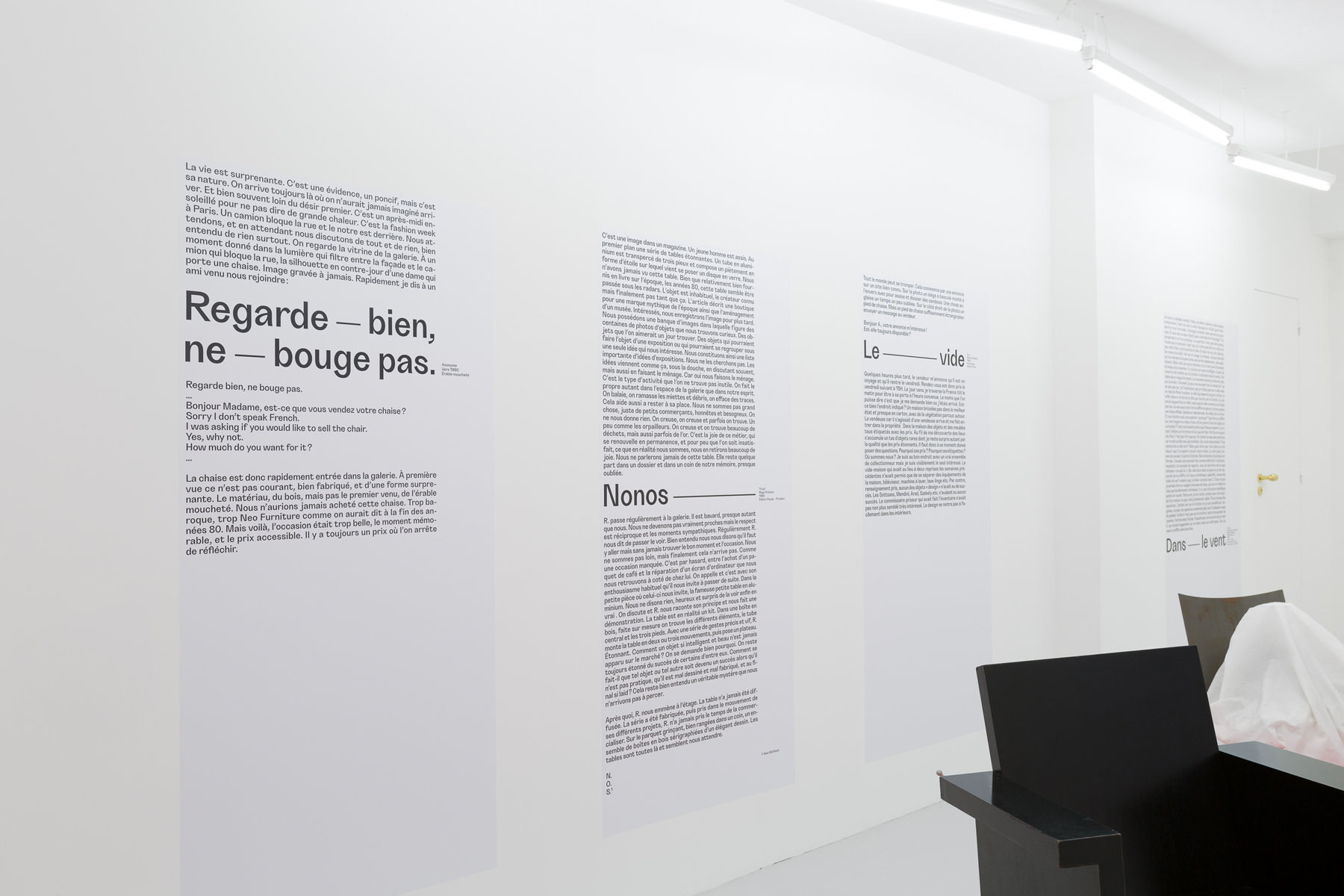







Provenances
Andrea Branzy, Jean-Pierre Caillères, Richard Hutten, Rei Kawakubo/ Comme des Garçons, Jasper Morrison, Régis Protière, Ettore Sottsass, Snowcrash, Martin Szekely
March 23rd
︎︎︎ April 2Oth, 2024
“Where do you find it all?” is a question we are frequently asked. Where do the objects that we exhibit come from? If you have the time we can tell you a few stories. Telling stories is probably one of the most wonderful things a human being can do. For an object designer, there is often a story, an approach, an anecdote, a moment that leads them to design an object in a particular way. But what about curators? What stories can we tell? Behind the objects on show, there are often stories, not always but often. Provenances is an exhibition that brings together a selection of objects and their stories. The stories of their origins.
Obviously, we don't always know where an object comes from. Even if you look hard enough, you can't always find anything. For the simple reason that in the field of decorative arts and design, several copies of an object are often produced, but selling them at the time they were made is not always possible. Were there one or more copies? Was the edition of 100 produced? Why are some copies signed and others not? These questions are sometimes impossible to answer. Sometimes the designers, manufacturers and witnesses have simply disappeared, and all kinds of scenarios are conceivable. A copy signed differently may be just as valid as another. The signature on an object can sometimes vary. All it takes is for the maker to have changed between the first copy and the others, and confusion is sown. And then all those unfinished pieces sit at the back of a workshop and end up on the market one day. The designer hasn't paid any attention to them, nor has the manufacturer, and then overnight the company closes. It's emptied, things are dumped, disposed of, recycled and sold. A smart ass passes by and an object can become the centre of attention. A screw in a different place, and it's a prototype. Why not? But then again it could be just a model made by the manufacturer to assess resistance, a test of some kind carried out while not working with the designer, or simply the production of a worker in his spare time, 'daylighting' or working another job on the side.
As soon as an object, or an artist, increases in value, we can also expect forgeries to appear, sometimes just around the corner, at a totally unexpected time. For this reason, it is now common practice, and indeed necessary, to have a document attesting to provenance. It's the only way to protect yourself. The provenance of an object is the certainty of its authenticity. In an industry where fakes are commonplace, manufactured and marketed, it's hardly surprising that provenance has become a major issue. But how can you be sure of a provenance? There's a story about a forger who had a fake work printed on period paper with the furniture he was selling. There are many stories like that. There was also the story of a piece of furniture with a provenance, displayed in a large show, but duplicated in several copies by a cabinetmaker who was very proud to talk about it.
So rather than making up stories and embellishing, the Provenances exhibition is going to tell them. Stories that are true, verifiable and witnessed. After all, what's the difference between one object and another? Why do we buy one object rather than another? It's often the story that goes with it that we buy. We buy a provenance, a story because we want to prolong it, to own it, to tell it in turn and to add our own. In Provenances, there are no great stories, even if there is a hint of an adventure - let's not be modest - but rather anecdotes.
Provenances is an exhibition that brings together a handful of objects and their stories. The story of their provenance. This is the story of a fruit bowl that met a floor lamp and a chair, which met another, and then another, while an overused lamp lamented the swirling movements of a small table. All this beneath the unblinking gaze of a lost armchair.
